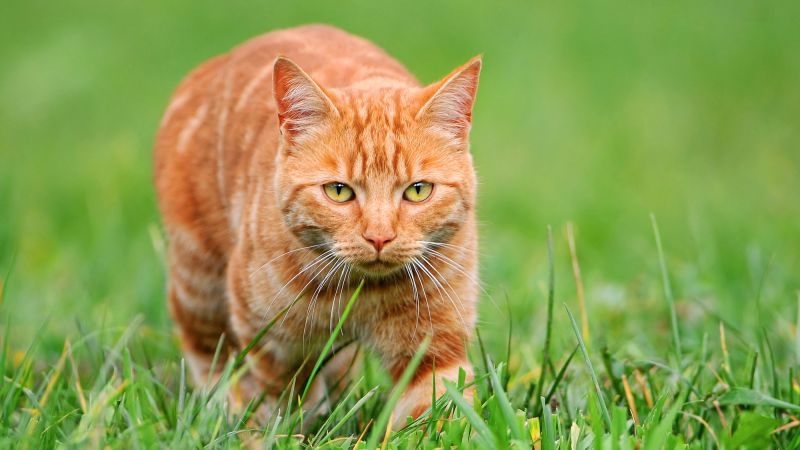Orange cats have charmed pet owners for generations with their friendly and feisty personalities. A recent study sheds light on what makes these iconic felines stand out, revealing that the reason behind their appealing coloration might not be as expected. Although many cat enthusiasts have long celebrated the warm and vibrant hues of ginger kitties, scientists have identified a unique genetic mutation that leads to their distinct orange coat. This mutation, reported in a paper published on May 15 in the scientific journal *Current Biology*, has not been observed in any other animal species.
The lead author of the study, Christopher Kaelin, who is a senior scientist specializing in genetics at Stanford University in California, emphasizes how unusual this type of mutation is. Traditionally, it was assumed that the orange coloration in cats was linked to the X chromosome, as a majority of fully orange cats are male. Female cats, having two X chromosomes, are less likely to be entirely orange since they would need to inherit the trait from both parents. Instead, many female orange cats manifest patchy patterns, such as calico or tortoiseshell fur.
Scientific inquiries into this genetic phenomenon have spanned decades, but the exact location and function of the mutation on the X chromosome remained a mystery. Typically, color mutations in cats arise from genes not located on the X chromosome, leading researchers to hypothesize that uncovering the molecular basis for this orange coat could yield intriguing findings. Greg Barsh, a professor emeritus of genetics and pediatrics at Stanford, noted the excitement surrounding the potential for new revelations about familiar genes.
Over the course of a decade, Kaelin has ventured into cat shows, collecting DNA samples from orange cats to establish a genetic database that could provide insight into their unique color. After comparing these samples to previously sequenced feline genomes, his research team identified a total of 51 genetic variations specific to the orange male cats. However, 48 of these variations were also present in non-orange cats, narrowing the search to three potential candidates for the unique mutation that induces the orange hue.
One of these candidates involved a deletion of 5,076 base pairs on the X chromosome, which, curiously, was situated in a non-coding region that does not appear to directly influence a specific protein. This mutation is strategically positioned between two sites that correlate with the gene Arhgap36, critical for hormone signaling pathways in mammalian cells. Despite its significance, there was no established connection to pigmentation.
To further explore the effects of this gene, Kaelin conducted experiments using tissues acquired from spay and neuter clinics. His team discovered that the mutation somehow activates the Arhgap36 gene in pigment cells, inhibiting the production of black pigment and allowing for the expression of orange coloration instead. Remarkably, the mutation has not been identified in other species, including wildcats, which points towards a unique evolutionary trait among domestic cats.
Kaelin speculated that this singular mutation likely occurred once during the process of domestication and has been perpetuated through selective breeding. His research findings indicate that identical variations can be found in orange cats across broad geographic regions, suggesting a shared ancestry. Historical validation was drawn from 12th-century Chinese art depicting calico cats, hinting at the mutation’s potential origins.
The implications of this research could extend well beyond simply understanding color genetics in cats. Professor Hannes Lohi from the University of Helsinki emphasized how the identified genetic variants might serve as essential instruments in population genetics, unveiling the evolutionary history of domestic cats. Meanwhile, Kaelin and his team strive to decipher how a small deletion—one that doesn’t directly lie within a gene—can influence the functional activity of a neighboring gene.
As the researchers delve deeper into this genetic anomaly, they also ponder whether the unique genetics of orange cats could correlate to their distinctive personalities. However, thus far, Kaelin has expressed skepticism regarding direct links, suggesting that while owners feel their orange cats exhibit unique traits, scientific evidence to support these claims is still lacking. Overall, this study not only clarifies an intriguing genetic puzzle but may provide insights applicable to understanding mutations and their broader biological ramifications across species.



